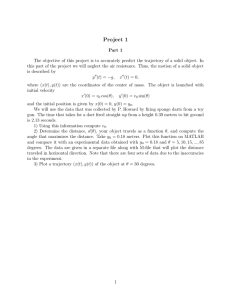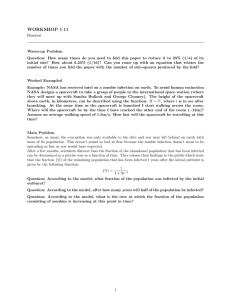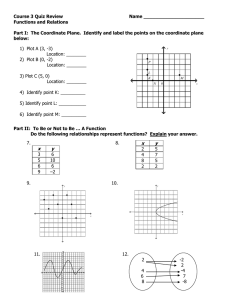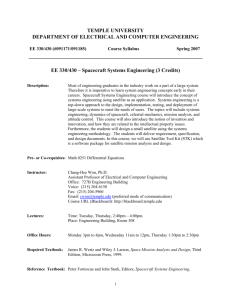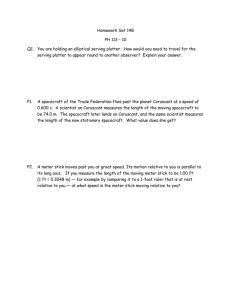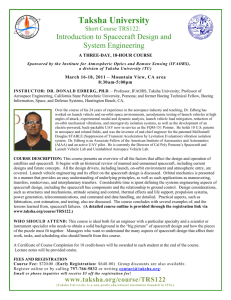MA3469 Practical Numerical Simulations 16 Assignment 3 Due: November
advertisement
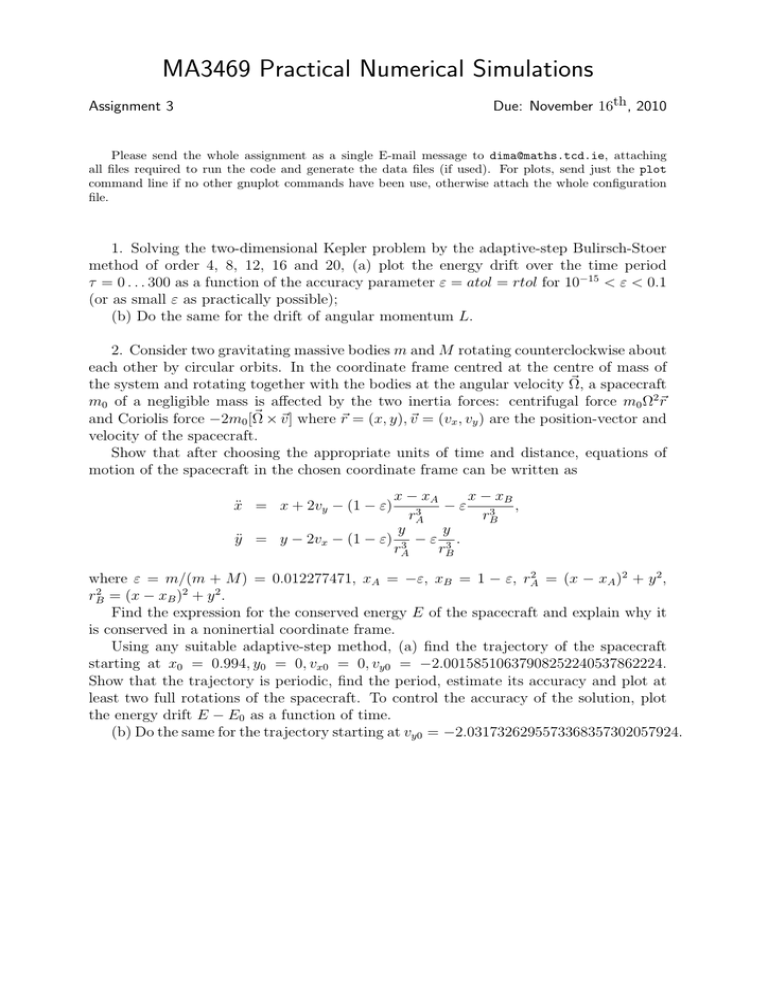
MA3469 Practical Numerical Simulations Due: November 16th , 2010 Assignment 3 Please send the whole assignment as a single E-mail message to dima@maths.tcd.ie, attaching all files required to run the code and generate the data files (if used). For plots, send just the plot command line if no other gnuplot commands have been use, otherwise attach the whole configuration file. 1. Solving the two-dimensional Kepler problem by the adaptive-step Bulirsch-Stoer method of order 4, 8, 12, 16 and 20, (a) plot the energy drift over the time period τ = 0 . . . 300 as a function of the accuracy parameter ε = atol = rtol for 10−15 < ε < 0.1 (or as small ε as practically possible); (b) Do the same for the drift of angular momentum L. 2. Consider two gravitating massive bodies m and M rotating counterclockwise about each other by circular orbits. In the coordinate frame centred at the centre of mass of ~ a spacecraft the system and rotating together with the bodies at the angular velocity Ω, m0 of a negligible mass is affected by the two inertia forces: centrifugal force m0 Ω2~r ~ × ~v ] where ~r = (x, y), ~v = (vx , vy ) are the position-vector and and Coriolis force −2m0 [Ω velocity of the spacecraft. Show that after choosing the appropriate units of time and distance, equations of motion of the spacecraft in the chosen coordinate frame can be written as x − xA x − xB −ε , 3 3 rA rB y y ÿ = y − 2vx − (1 − ε) 3 − ε 3 . rA rB ẍ = x + 2vy − (1 − ε) 2 where ε = m/(m + M ) = 0.012277471, xA = −ε, xB = 1 − ε, rA = (x − xA )2 + y 2 , 2 rB = (x − xB )2 + y 2 . Find the expression for the conserved energy E of the spacecraft and explain why it is conserved in a noninertial coordinate frame. Using any suitable adaptive-step method, (a) find the trajectory of the spacecraft starting at x0 = 0.994, y0 = 0, vx0 = 0, vy0 = −2.00158510637908252240537862224. Show that the trajectory is periodic, find the period, estimate its accuracy and plot at least two full rotations of the spacecraft. To control the accuracy of the solution, plot the energy drift E − E0 as a function of time. (b) Do the same for the trajectory starting at vy0 = −2.0317326295573368357302057924.




